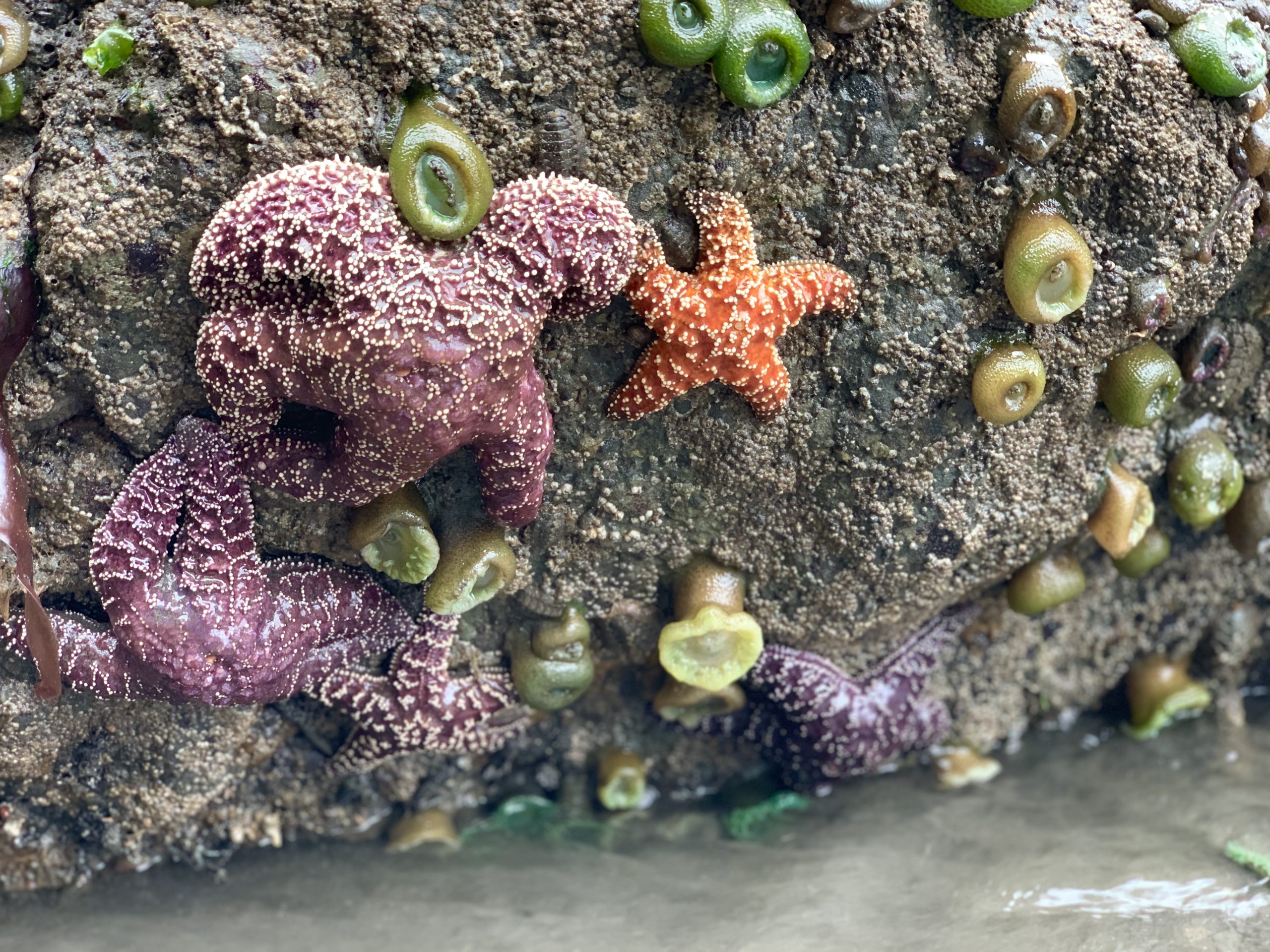
Life In The Intertidal
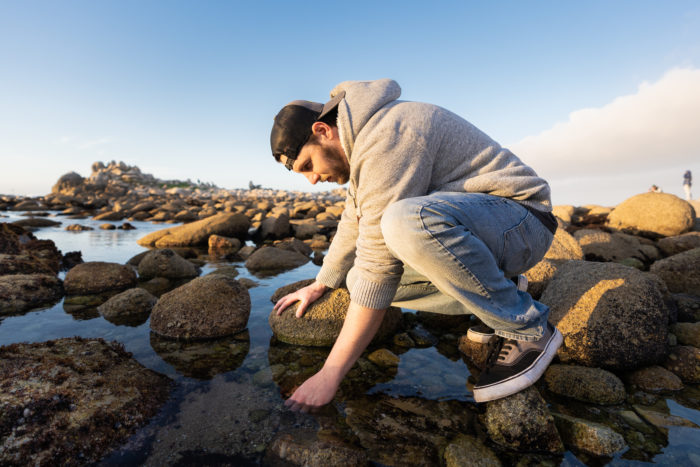
Tidepooling in Monterey Bay National Marine Sanctuary. Photo credit: Allison Formica
The ocean is rich with biodiversity, some of which can be found in places that might surprise you. In fact, you can experience some of the ocean’s most fascinating ecosystems firsthand without ever getting in the water. Tide pools are home to a wide variety of marine plants and animals and can be explored from on land.
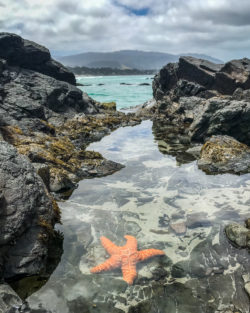
Photo credit: Douglas Croft
Description
Tide pools are small, isolated pockets of water that form in the ocean’s intertidal zone. Typically a few inches to a few feet deep and a few feet across, these pools appear when the tide recedes and seawater gets trapped in depressions along the shorelines of rocky coasts. A diverse array of marine plants and animals also become trapped in these shallow basins. Each tide pool is a bustling ecosystem filled with marine life competing for space and food. These organisms face many grueling challenges to survive – they must endure hours of harsh sun exposure, low oxygen levels, increased water temperatures, and vulnerability to predators. At high tide, fresh seawater brings relief but also introduces disruptive, crashing waves and grants predators like fish temporary access to tide pool habitats.
Species in Tide Pools
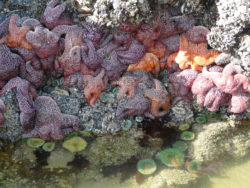
Photo credit: Olympic Coast National Marine Sanctuary
Tide pools are home to numerous marine species, including sea slugs, sea urchins, sea cucumbers, hermit crabs, sea lettuce, and red algae. Survival in tide pools’ arduous conditions has required inhabitants to develop interesting and helpful adaptations. Barnacles, limpets, sea stars, and anemones produce sticky, glue-like substances that hold them in place as the tides change. Other tide pool dwellers achieve this by burrowing beneath sand, rocks, or seaweed. Animals with strong shells, like snails and mussels, or hard exoskeletons, like lobsters and shrimp, have increased protection from predators and are better able to keep their bodies moist during low tide.
Tidepooling Tips
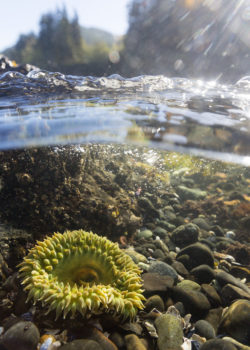
An underwater view of an anemone in Olympic Coast National Marine Sanctuary. Photo credit: Adam Baus
Exploring tide pools, or “tidepooling,” is a great way to experience the vibrant array of marine life that inhabits these areas. Tidepooling is an exciting and educational activity and a great way to spend time while visiting the National Marine Sanctuary System. Olympic Coast National Marine Sanctuary, Channel Islands National Marine Sanctuary, and other sanctuaries around the country have great tidepooling opportunities – plan a visit and see how many species you can find while exploring these incredible ecosystems!
Low tide presents the best opportunity to explore tide pools. Remember, these pools are found on rocky beaches, so wear supportive shoes that you don’t mind getting wet. Step carefully and try to find footholds on bare rocks to avoid slipping on algae and seaweed. Many animals living in tide pools prefer to spend time hiding under rocks, so feel free to pick up stones and search underneath them – just be sure to put them back where you found them, as various animals and plants rely on these rocks for protection. It’s important not to take any tide pool-dwelling animals home with you. Doing so is illegal in many areas for the protection of these creatures and their ecosystems.
Tidepooling also presents opportunities to clean up beaches and intertidal zones! Bring a bag along to collect trash while exploring tide pools. By leaving these areas cleaner than they were when you arrived, you can positively impact the health of our ocean, coasts, and National Marine Sanctuary System.
Threats and Conservation
Climate change poses a significant threat to tide pools and the animals inhabiting them. Increasing water temperatures have affected species composition in tide pools by forcing organisms to relocate in search of cooler water. Rising sea levels can also displace these creatures, as variations in depth can mean death for some species. Ocean acidification driven by climate change also threatens tide pool ecosystems and animals like mollusks by weakening their shells and leaving them vulnerable to predation.
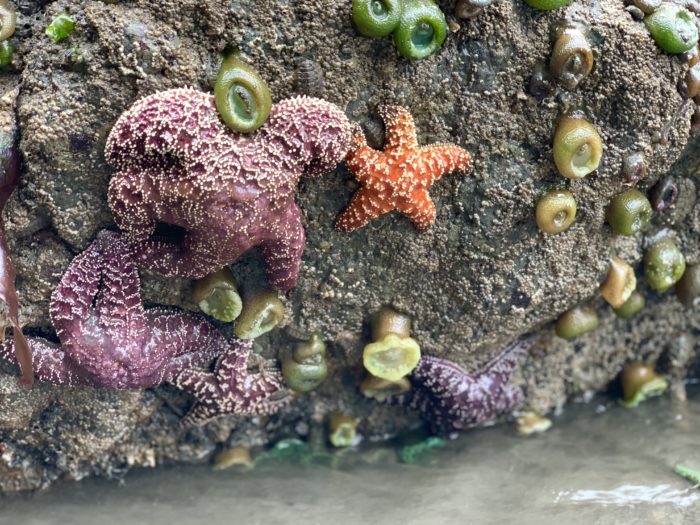
Ochre stars and sea anemones in Olympic Coast National Marine Sanctuary. Photo credit; Trinity Reyes
